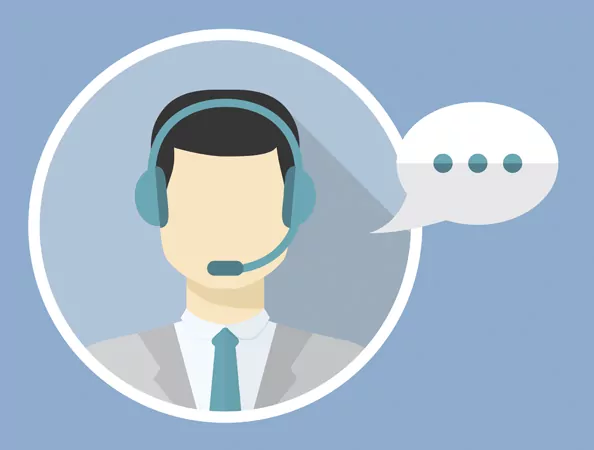Here’s a trend that dealerships simply can’t ignore. Online chat isn’t just growing, it’s exploding. Chat is rising year over year as a customer communication channel, and the trend isn’t expected to stop any time soon.
In fact, Contact Babel projected that chat use would grow 24% annually from 2014 to 2018. This projected growth is great news for consumers, given that chat is, by far, their most preferred online communication channel. But what exactly is driving this trend? Here are the top four reasons for the chat explosion.
1. Chat is passive.
Like it or not, Millennials are flexing their powerful influence more and more every day and they like mobile technology. A lot. With over 6 billion text messages sent per day in the United States alone, texting has become entrenched as a preferred method of communication.
But why?
One major reason is that texting is passive, and consumers like passive. It doesn’t require two people to be paying 100% attention to each other at the same time to have a conversation. One person can send a message and the other person can read and respond to it either immediately or a little later.
Texting and chat are similar in this way. Chat is also passive. So, if the preference for passive communication channels is driving the text messaging revolution, it stands to reason that it’s the same driving force for the online chat revolution.
It really shouldn’t come as a surprise. These chats permit greater flexibility for consumers. They can pop into a chat every few minutes and fire back a reply, then get back to whatever they were doing—working, browsing, texting someone else. In any case, the flexibility is a huge reason customers love using chat in both sales and customer service applications. Dealerships need to leverage this desire for passive communication and position themselves to provide difference-making messages.

2. Chat is (or can be) mobile.
Many chat applications provide mobile apps for both the provider and the customer. While mobile access to chat isn’t a universally expected feature right now, it will be, and soon.
If customers can completely unhitch themselves from a desk phone or desktop PC, life seems better. Not only can they reply to that urgent email between chat messages, but they can also run to the Starbucks across the street for another shot of espresso to combat the Monday morning cobwebs.
Mobile equals freedom, and customers love freedom. As more businesses offer mobile chat for customers, customer satisfaction will continue to increase and savvy businesses will separate themselves from the pack. Dealerships are starting to see this trend already, as buyers who have gone through a mobile experience report higher satisfaction during the vehicle buying process.*
3. Chat is the perfect channel for sharing digital resources.
While customer preference of chat for sales and support communications is driving chat adoption, the benefits of chat for providers is also perpetuating its enormous growth. One of those big benefits is that chat is perfect for getting digital resources to customers.
In-person and phone interactions can delay or obstruct the distribution of these resources—“Can I get your email so I can send this to you?” you might ask, or, “Here, take this brochure with a web address and look it up when you have time.” With chat, distributing digital resources is no problem.
Need a link to the homepage? Boom—here you go. Like to see our pricing? Here’s the link to the PDF. Digital, meet digital. Plus, chat is a good way for dealerships to kick-off the pre-screening process.

4. Chat is less complex to support than traditional customer service or sales channels.
Chat isn’t a cakewalk, and, if it’s done wrong, can spell disaster for the company botching it. But, while chat does emphasize soft communication skills (basic grammar skills, of course, but also the ability to write with an empathetic tone), there’s less opportunity for jarring customer interactions.
Got a customer talking on the phone to a sales rep that’s having a bad day? Doesn’t matter that your rep said all the right things, you still lost the sale. Did that prospect walk into the showroom and catch the sales manager slouched in his chair with coffee staining his tie? Say bye-bye to clinching quota this month.
None of that—not your tone of voice, posture, or appearance—matters with chat. Excellent chat communication skills are easily taught (or even somewhat automatic). An associate with a command of their native language and some coaching about empathetic communication can ace a customer experience test.
Additionally, the actual customer interaction with chat is much lower pressure than an active, one-on-one interaction.
In a phone or in-person conversation, slight pauses can be taken as uncertainty, lack of decisiveness, or even ineptitude. In chat, though, it’s just part of the customer’s expectation that messages are being processed and replies may take a minute or two. This expectation makes for a much less intimidating support or sales channel for new associates and can translate into a more accessible solution for businesses.
Chat Is Here to Stay
All in all, while there are a plethora of reasons why chat as a communication channel is growing so quickly, advantages in the areas of customer satisfaction and customer service execution offer some of the most compelling reasons. Bottom line: If your dealership hasn’t yet incorporated chat as your next sales and/or service channels, do it. You won’t regret it. Chat is here to stay.
*According to the J.D. Power U.S. Sales Satisfaction Index (SSI) Study
Explore more resources
Autosoft Named 2025 Autotech Outlook Award Winner
Dealers get small-town attention, fast support, and a powerful DMS at a price that fits. Discover why Autosoft is the…
Small-Town Attention Meets Big-Time Value: This Is Your Next DMS
Dealers get small-town attention, fast support, and a powerful DMS at a price that fits. Discover why Autosoft is the…
3 Ways the Right DMS Can Help Low-Volume Franchise Dealerships
Autosoft’s four-pillar approach to protection and maintenance safeguards your data and keeps your dealership running.
Stay up to date
Subscribe to get the latest auto industry insights from Autosoft experts





